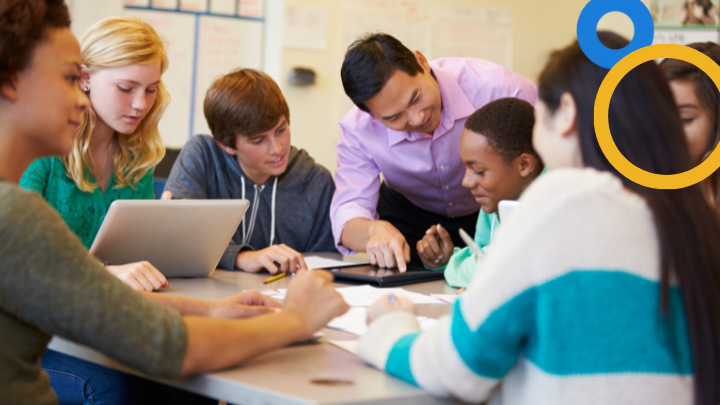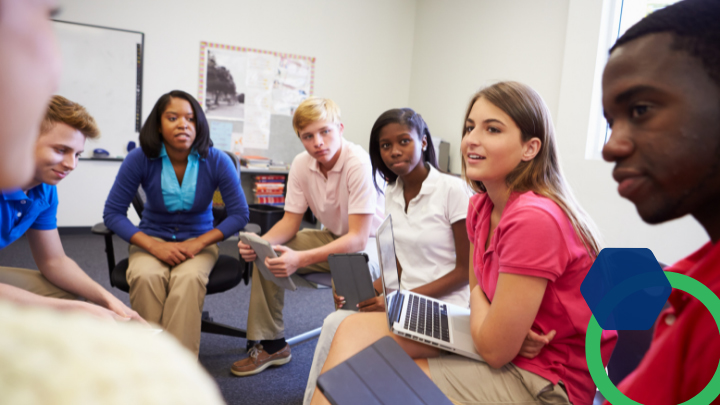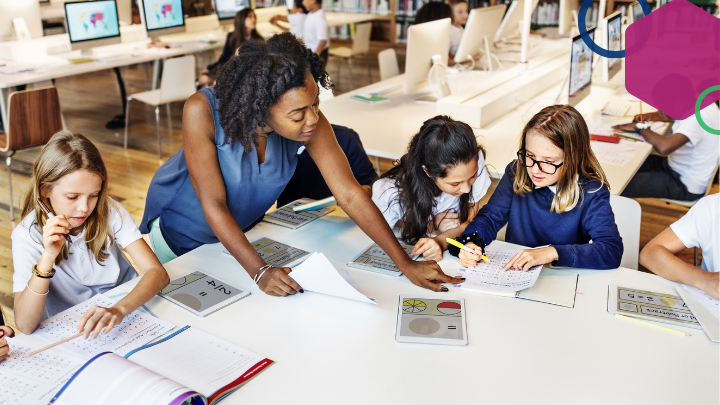After the uncertainty and stress of the COVID-19 pandemic in the last two years, it can be hard for educators to know where to begin planning for the new school year. The pandemic taught us students are flexible and resilient, but transitioning to something new always brings challenges. Educators need a plan for how to support students socially and emotionally as they return from summer break. There is often so much academic content to cover across the school year that teachers might feel the need to jump right in when the school year begins. However, prioritizing students’ wellbeing from the start of the year saves time and energy later on.
So, how can educators help students make their return to school as smooth as possible from a social-emotional point of view? Here are four key steps to start the school year strong:
Evaluate Classroom management systems for inclusiveness and community
Start by reconsidering classroom management to best fit your school community and student needs. In this strategy, you will learn how you can reevaluate your plan to ensure it creates community and does not focus only on compliance. At the heart of community is relationships. A strong classroom management plan paves the way for that class community and for relationships to be restored after student behavioral issues.. In order to help students adjust to being back in school,give them a voice in the classroom community.
A great question to ask as you plan for the fall is: What systems/routines can I put in place that build community in my classroom?
Here are some ideas:
- Create a structured time for students to come together as a class community to discuss conflicts and strengthen social-emotional skills:
- Hold space for a circle-up time
- Have a daily morning meeting
- Consider giving students a voice in that classroom management plan using strategies like:
- Creating shared classroom values: help students feel really connected to the classroom and create a common language
- Creating and improving class rules and procedures with students: don’t forget to come back and revise as needed throughout the year!
Coach Tips
- Your students will surprise you. They want a safe, fun, fair, and inclusive environment, too! Asking for and including their ideas in school rules and procedures, helps themfeel seen and heard.
- Think about what you do when a student misbehaves. Does the consequence make sense? The answer might not be taking away recess. For example, if they damaged property, how can they fix it?
- Circle-up creates structure and helps students thrive and feel safe. After coming back from summer, they may not have had that,creating structure from the starthelps themreacclimate.My students always held me accountable and ensured we had a “circle-up” even on the most rushed of school days.
Create an inclusive and safe environment
In order to make a smooth transition to school, ensurestudents feel safety, love, and connection. This is a huge part of creating an inclusive environment forstudents. Whenstudents feel safe, seen, heard, and respected, they can thrive in all areas: socially, emotionally, and academically. In order for students to take in new information and problem solve, their basic needs must be met.
As you plan, ask yourself: What systems/routines can I put in place to help my students feel safe, seen, heard, and respected every day?
Here are some strategies to help leave space for students to check in with how they are feeling and de-escalate when needed:
- Create time for emotion check-ins using fun tools like mood meters or emotion wheels.
- Use classroom zones to create different spaces in the room to meet the diverse needs of your students. For example, building a peace corner gives students space to de-escalate.
- Teach and model coping strategies such as self-regulation and self-awareness.
- Try mindfulness techniques to give students and teachers a moment to focus and relax. This can be especially helpful during the first hectic days of adjusting to a new school year.
Coach Tips
- My students checked in with how they were feeling on a poster in the classroom and in a journal each day. This helped me to see when students were struggling and also celebrate the days they were feeling great! In the beginning of the school year, I was able to pinpoint which students had tougher starts to the day and found it more challenging to adjust to being back in school.
- Even when you feel like you don’t have time for a mindful moment, you and your students will always feel better after. Make it a part of your classroom routine, even for a few minutes. .
Build positive relationships from the start
It’s helpful to be intentional and think about how we can truly use what our students share with us to benefit them all year. We can prioritize the start of the year as a time to build the foundation to get to know students all year to personalize instruction.
One question to consider at the start of the year is: What systems/routines can I put in place to ensure I am connecting with each student everyday and getting to know my students all year?
Strategies to implement at the start of the year to support your students socially and emotionally while strengthening your relationships:
- Allow students to share privately with you: Try implementing “I wish my teacher knew” throughout the year. Create a place for your students to share with you, not just on the first day of school. It could be sticky notes in a jar or in a notebook that they can visit daily, weekly, or as needed.
- Help every student feel seen each day by using thresholding to greet students at the door.
Coach Tips
- Creating these systems and structures, allows teachers to learn about what students need socially and emotionally. My students often shared about conflicts they were having in our jar and then as a result, we could address these in our circle-up time.
Partner with student families
When you partner with student families, you can better serve your students and create a trusting relationship. Families have a lot of insight about their child and can be valuable to gather information at the start to set up a communication plan throughout the year.
A key question to think about: What systems/routines can I put in place to ensure I am checking in with families regularly throughout the year?
Strategies to build a trusting relationship from the start:
- Create a family partnership plan to help understand how to best communicate and check-in with families.
- Communicating positive news will help build strong and trusting relationships with a family.
Coach Tips
- There is something so powerful about emailing, calling, or texting a family with positive news.. Every person wants their bucket filled and this is a wonderful way to shine light on a student’s strengths. Ultimately, it honors the hard work that educators, students, and families all do. Everybody wins!
All educators know the start of the school year sets the foundation for the rest of the year. Educators and students alike have been through so much since 2020. The best thing we can do for ourselves, our students, and our school community ismake that start of the year strong,academically,socially and emotionally.
Think about what areas could improve: classroom management, classroom environment, relationships, or communication with families. Collaborate with colleagues around these goals. That extra step to support students is worth it.
To learn more about social-emotional learning at BetterLesson, explore our Social-Emotional Learning focus area. If you would like further support to implement Social-Emotional Learning in the classroom, a BetterLesson Instructional Coach can help you get started.








